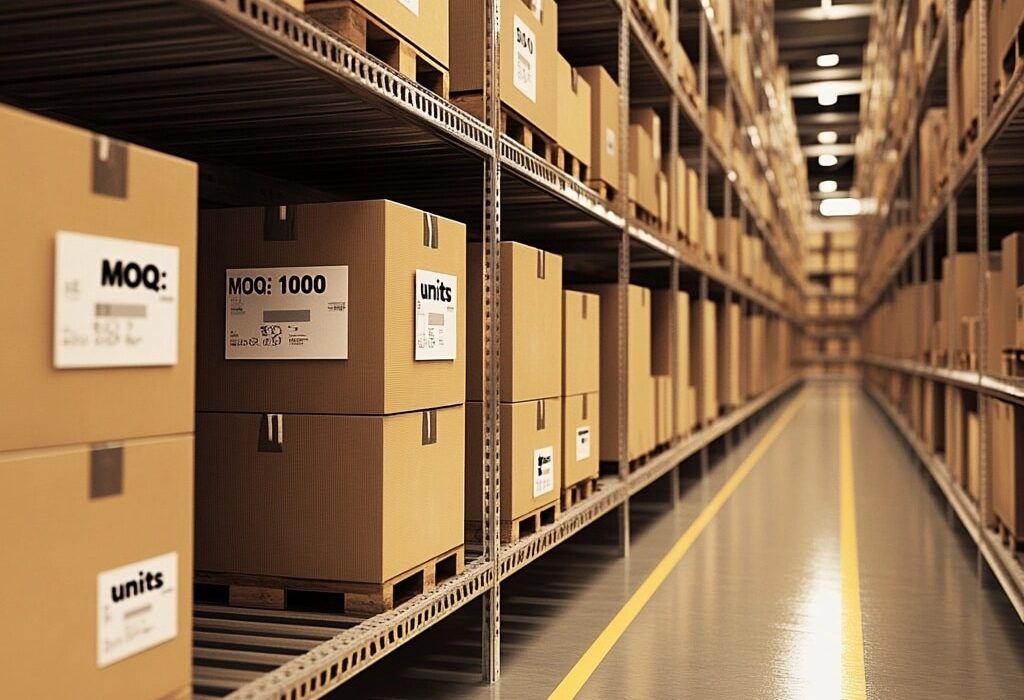Estimated reading time: 2-3 minutes
Why Minimum Order Quantity Matters
In today’s competitive market, efficiency and cost management are essential for success. One term you’ll often hear, especially in manufacturing and supply chain management, is MOQ—Minimum Order Quantity. But what does it really mean, and why is it so important
MOQ plays a significant role in business, affecting everything from pricing to inventory management. This explanation covers the concept of MOQ, its influence on operations, and its importance for smarter business decisions. Understanding MOQ can assist small business owners and procurement professionals alike in making more informed choices for their businesses.
Why Minimum Order Quantity Matters
MOQ stands for Minimum Order Quantity. It’s the smallest number of units a supplier is willing to produce or sell in a single order.
For example, a supplier may require an MOQ of 500 units for custom t-shirts, meaning you can’t order fewer than that amount.
MOQ is a way for suppliers to ensure profitability and manage production costs. It’s often used in industries like manufacturing, wholesale, and e-commerce, where managing production runs and inventory is crucial.
Why MOQ Matters in Business
MOQ in Supply Chain Management
MOQ helps suppliers plan production and manage inventory, cutting down on waste and minimizing downtime. For buyers, MOQ impacts stock levels—ordering too few units might leave you without enough inventory, while ordering too many ties up capital in unsold goods.
For instance, a retailer ordering seasonal decorations may face high MOQs to meet demand. Ordering too little means missing out on sales, while ordering too much can lead to excess stock.
Impact on Pricing
Higher MOQs often lower the cost per unit because suppliers save money on bulk production. On the other hand, low MOQs can increase costs but give small businesses more flexibility, especially when testing a new product.
MOQ affects your profit margins and cash flow, so it’s important to factor it into your pricing strategy.
MOQ in Manufacturing and Shipping
In manufacturing, MOQs are usually set based on production setup costs, like machine calibration or mold creation. For example, a factory might require an MOQ of 1,000 units for phone cases to cover these initial costs.
With newer technologies, such as 3D printing, smaller MOQs are becoming possible, but the cost per unit can be higher.
Shipping MOQs ensure containers or pallets are packed efficiently, reducing transportation costs per unit. For example, an importer might need an MOQ of 200 boxes to ship goods economically by sea. Low MOQs can increase shipping costs if partial loads are used instead.
How to Determine MOQ for Your Business
When deciding on the right MOQ for your business, there are a few factors to consider:
- Product Type: Custom or complex items typically have higher MOQs than simple products.
- Supplier Size: Larger suppliers often set higher MOQs. Smaller suppliers may offer more flexibility.
- Demand Forecast: Ensure your sales predictions match the MOQ to avoid overstocking or understocking.
- Budget: Make sure you can afford the upfront cost of meeting the MOQ.
Negotiating MOQ with Suppliers
At Selery, we understand that every business has unique needs. That’s why we take a personalized approach to help businesses find the best MOQ solutions based on their specific requirements. Whether you’re a startup or an established enterprise, our team can guide you in navigating the complexities of MOQ to ensure your business operates efficiently and cost-effectively.


